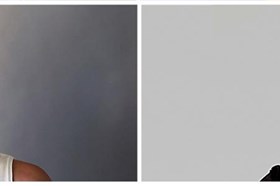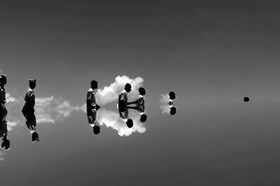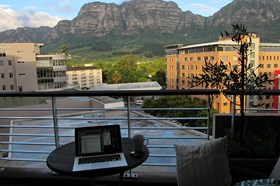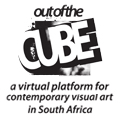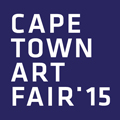artthrob picks
We Have Lost an Artist
By Renee Holleman on 19 January
Unathi Sigenu and Khanyisile Mbongwa
Die Kat - Installation Shot,
2012.
Installation
It's common practice at the turn of the year to contemplate the past 12 months in review, and having spent last Sunday afternoon at the memorial for Unathi Sigenu, I found myself reflecting on those who have left us in this time - and on what it means to be part of this 'us', this community we call the 'art world'.
These past few weeks have seen the sudden, tragic and untimely deaths of three people engaged in the South African art community – Peter Hayes, Clinton De Menezes and Unathi Sigenu, and it marks a year since the passing of the very much loved Colin Richards. * (Ed's note: Paul Du Toit has died since time of writing)
Although I did not know each of these people equally or especially well, I have felt the impact of their loss as it has rippled through a network of others. It has reminded me of the fact that the art community can be a very small place with its particular set of interests and references, and that we know each other, personally or by reputation, and follow each other's successes and failures with care and interest if not a little envy in our darker moments.
As small communities go I don't think we're entirely alone in this regard, but it does make for a curious dynamic in how we define the parameters and terms of inclusion in this space, or spaces. There are after all many 'art worlds'; micro-communities within the larger sphere of activity that is designated as art-making in its multiple forms, defined by locality, race, gender, economic means, commercial and academic imperatives, medium, concept, methodology and more.
While the diversity and fluidity of this terrain is something we may well take for granted, its more tangible effects can perhaps be grasped when we seek to understand the challenges of traversing these micro-communities, and how it might impact on individual artists and their sense of creative and personal integrity. I don't mean to suggest that these various terrains, and the gaps and ruptures between them are not productive or valuable, but simply that it can sometimes be hard to negotiate them. Being an artist is at times (if not by necessity) a lonely and vulnerable occupation, and it can be difficult to evaluate successes and failures both within a creative community and outside of it (where different criteria apply).
My interest in this web of relationships has to do with the fact that when confronted by the loss of an artist, one of the questions that seems to arise is about what it means to be an artist, a phenomenon which I feel does not equally attend the passing of nurses, scuba divers or accountants. When does someone become an artist? we might ask, and more importantly what happens when someone stops making art? What does it mean to be a non-practicing artist?
Although this may seem a kind of polemical series of questions, I think it suggests an interesting avenue of inquiry. I recently, for example, came upon a residency for 'non-practicing' artists, for which you could only qualify if you were certain that you would not be making anything within a 6 – 12 month period. It required, in other words, a commitment to non practice that is extremely un-common. In the early stages of artist Michael MacGarry's career his website 'All Theory, No Practice' was iconic in its disavowal of physical making, although he did eventually move on to producing 'things'.
It's an obviously complicated debate, and not one I intend to fully explore here, other than to note with interest the emphasis on making and productivity in relation to identity, as though, the term 'artist' - being so fluid - might consistently require some sort of tangible evidence to back it up.
As the new year unfolds we will miss all those who are no longer with us, the energy and enthusiasm which they shared (within and outside of their practices), and we will celebrate all the things they did and did not make.
art events calendar
VIEW FULL CALENDARbuy art prints
edition of 60: R7,000.00
About Editions for ArtThrob
Outstanding prints by top South African artists. Your chance to purchase SA art at affordable prices.
FIND OUT MORE Editions for artthrob


